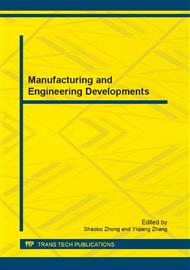p.768
p.775
p.780
p.784
p.790
p.796
p.800
p.805
p.810
New Compound Method for Target Recognition and Tracking
Abstract:
In this paper, we propose compound target detection and tracking method that combines Bayesian local features classification and global template tracking. During target initialization phase, we convert local features recognition problem into Semi-Naive Bayesian classification theory to avoid computing and matching complex high-dimension descriptor. During tracking, detector hands over tracking task to the template tracker, which imposes temporal continuity constraints across on-line frames in order to increase the robustness and efficiency of the results. In typical application scenarios, once the tracker loses target, it requires the detector for reinitialization. Experiment results confirm the efficiency of our approach at last.
Info:
Periodical:
Pages:
790-795
Citation:
Online since:
January 2013
Authors:
Keywords:
Price:
Сopyright:
© 2013 Trans Tech Publications Ltd. All Rights Reserved
Share:
Citation:


